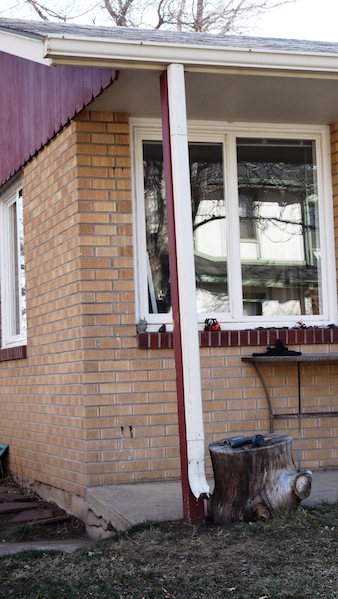Mastering Roof Inspections: Roof Drainage Systems, Part 2
by Kenton Shepard and Nick Gromicko, CMI®


Here, you see a foundation where erosion has washed soil away from beneath the wall, leaving the foundation unsupported in large areas. This was caused by downspouts that discharged next to the foundation. This is a very common condition and should always be called out by inspectors as a defective condition.

The unsupported part of the foundation wall bridges the area where there’s no support. If too much of the wall loses support, it may break and settle.

Downspouts should connect to the gutters securely and be free of debris. They should have some device, such as an extension or splashblock, that will carry runoff away from the foundation before discharging it to the soil.


Clogged downspouts will cause runoff to overflow the gutter.


You’ll sometimes see downspouts tied into perimeter drains, and this can be a problem when the ground is frozen. Ice may prevent the system from working.

When this happens, homeowners may disconnect the downspout, which may never be re-connected.


You’ll see alternatives to conventional downspouts, such as chains. The idea is that chains are durable and runoff will simply run down the chain. How far from the foundation runoff is discharged depends on the length of the roof overhang.
Interior Downspouts

In-roof gutters sometimes connect to downspouts installed inside the exterior walls. In older homes, these downspouts are made of metal, which eventually corrodes and leaks.

Internal downspout leakage can sometimes go unnoticed for long enough to do considerable damage.

In this Colorado home, the internal downspouts were tied to underground drains which froze, blocking drainage. This eventually resulted in corroded downspouts, causing the framing to decay.

This condition continued for a long time.
**************************************************
Learn how to master a roof inspection from beginning to end by reading the entire InterNACHI series: Mastering Roof Inspections.
Take InterNACHI’s free, online Roofing Inspection Course
Mastering Roof Inspections
Roofing Underlayment Types
Inspecting Underlayment on Roofs
Fall-Arrest Systems
Roofing (consumer-targeted)
More inspection articles like this

